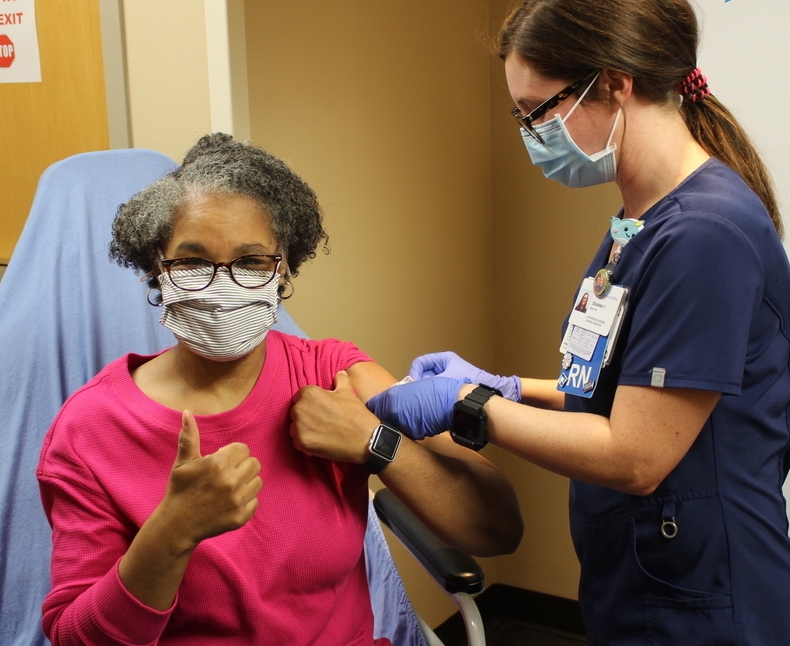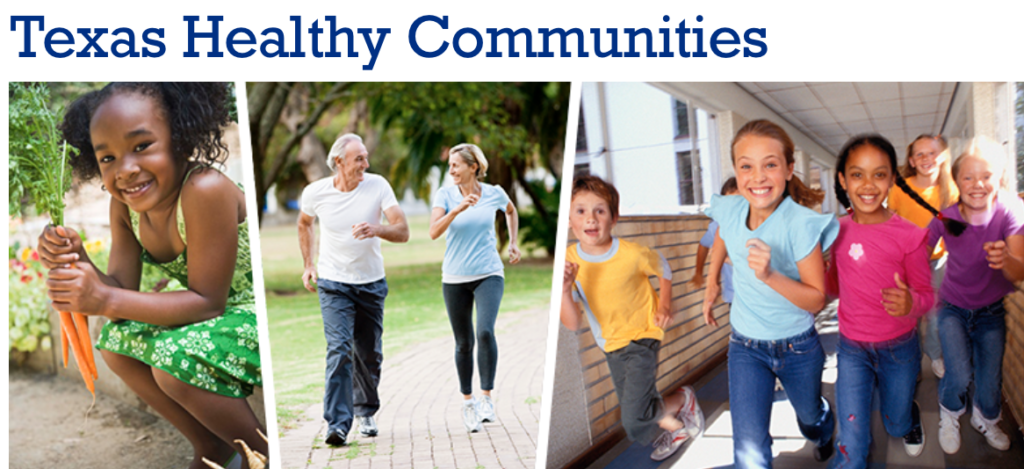By Deneece Ferrales
Feb. 7 is National Black HIV/AIDS Awareness Day. Uriah Robertson and the team at Waco-McLennan Public Health District who work in the clinic for HIV/AIDS services are preparing to use the occasion to raise HIV/AIDS awareness and encourage testing.“

Studies show that African Americans make up about 45 or 47 percent of new HIV diagnoses,” Robertson said. “Amongst women, we are seeing that African American women are 57 percent of new diagnoses. So, how do we decrease the numbers? We have to educate, advocate, encourage routine testing and so much more.”
As a risk reduction specialist, Robertson said his job is to “work with the community to provide intervention and prevention tools. We even perform HIV testing and encourage the importance of knowing your status.” Risk reduction specialists “have those conversations that others are afraid to have. We work to build rapport with our clients so we can get out into the clinic so that we can get the word out about our services while also working to break down the walls of stigma about HIV/AIDS.”
According to HIV.gov, a website managed by the U.S. Department of Health and Human Services, he first Black HIV/AIDS Awareness Day was held in 1999 as a grassroots opportunity to raise awareness in minority communities. In 2001, the day was given national status. This became needed as the number of new infections were disproportionately affecting people of color, particularly Black communities. At that point, new cases of HIV were escalating so quickly in the Black community that national leaders and the Centers for Disease Control began concerted efforts to combat the spread of HIV/AIDS in communities of color. According to the CDC, the history of these efforts includes:
- In 1998, the Congressional Black Caucus joined African American leaders from all over the U.S. to declare a “state of emergency” and created the Minority AIDS Initiative to offer funding for prevention efforts in Black communities. The CDC launched an array of prevention efforts aimed at preventing the spread of HIV among African Americans as a result of this funding.
- In 2000, HIV cases among Black and Latino men exceeded cases among White men, which was disproportionate to the general population, thus calling attention to health inequities surrounding the spread of HIV/AIDS.
- In 2007, the CDC launched its expanded HIV testing initiative to increase testing opportunities, primarily among African Americans.
- In 2008, the Black AIDS Institute reported that if Black America were its own country, it would rank 16th in the world in terms of number of people with HIV. It was estimated that 1 in 16 Black men would contract HIV/AIDS in their lifetime (approximately 6% of the population) and 1 in 32 Black women would contract HIV/AIDS in their lifetime.
- In 2010, the Obama Administration released first National HIV/AIDS strategy for the United States, which called on the nation to focus HIV prevention efforts on those at greatest risk, including African Americans.
Despite these efforts, sadly, this has not changed in the past 23 years. African Americans, more than any other race, have the highest rates of HIV infection in the nation. Black Americans account for approximately 14% of the U.S. population, but nearly half of those living and dying with HIV and AIDS are Black. Within this population, gay and bisexual men are the most affected, followed by heterosexual women. AIDS is the third leading cause of death among Black women aged 25–34 and 35– 44 and among Black men aged 35–44 (CDC).
Not only does this health inequity appear in the number of African Americans contracting HIV/AIDS, it also appears in the treatment of HIV/AIDS. Compared to all other persons with HIV, African Americans had the lowest rates of viral suppression. According to the CDC, out of every 100 Black persons living with HIV, only 63 are receiving some type of HIV care, 48 of 100 were retained in HIV care, and 51 of 100 were virally suppressed. This means that little more than half of all African Americans living with HIV received any type of treatment.

Though HIV is preventable, prevention remains the biggest challenge and further calls attention to the health inequities around this disease in Black communities. The challenges to prevention efforts include the stigma of a positive HIV status, people not having awareness of their HIV status, homophobia, racism, and mistrust of the healthcare system.
Lack of awareness of one’s HIV status can also lead to poor HIV treatment outcomes. Further, STI rates among African Americans are higher than among any other minority group, and there is a link between being diagnosed with other Sexually Transmitted Infections (STIs) and contracting HIV.
Lastly, persons experiencing poverty, which is higher in Black communities, are less likely to have access to quality healthcare for HIV, stable housing, and HIV prevention services.
So where do we start in addressing this health inequity? The most important place to begin is to encourage testing. If HIV is left untreated, chronic illness and death are the likely outcomes.
The first step to preventing this is for a person to know his or her status. Knowing one’s status can also prevent the further spread of HIV. Health professionals must continue to partner with Black community leaders to make outreach efforts aimed at more testing and increased awareness of prevention.
HIV treatment and prevention has come a long way in the past three decades. On Feb. 7, it is important to increase awareness of the continued need to address HIV prevention and treatment, particularly in Black communities. This is also a great day to encourage testing and the importance of knowing your status. Together, we can continue that fight to eradicate HIV/AIDS.

Deneece Ferrales, Ph.D., is director of health initiatives for Prosper Waco.
The Act Locally Waco blog publishes posts with a connection to these aspirations for Waco. If you are interested in writing for the Act Locally Waco Blog, please email the ALW team — [email protected].
Dec. 14 marks the one-year anniversary of the FDA’s authorization of COVID-19 vaccines for emergency use. For the first time since the pandemic began, the United States was able to have a proactive response to protecting people from the Corona virus.

“This is a day to reflect on the marvel that it is that a year after the emergence of this new virus that vaccines could be developed, tested and deployed that are remarkably effective and safe,” said Dr. Farley Verner, health authority for Waco-McLennan County Public Health District. “And now over the year that these vaccines have been in use it is likely that over 200,000 deaths and untold numbers of hospitalizations have been prevented in the United States alone.”
The local public health district received the first shipment of 200 doses of the Moderna vaccine Dec. 23, 2020, and began vaccinating first responders. Since that time, the health district has administered 64,006 doses of vaccine through mass vaccination clinics, drive-through clinics, mobile clinics, and its main clinic.
Currently, 51% of McLennan County residents ages 5 and up are fully vaccinated.
The health district offers the Johnson & Johnson, Moderna, and Pfizer vaccines Monday through Friday at the main clinic (225 W. Waco Dr.) and at mobile clinics throughout McLennan County. You can find the schedule at www.covidwaco.com/.
The Act Locally Waco blog publishes posts with a connection to these aspirations for Waco. If you are interested in writing for the Act Locally Waco Blog, please email the ALW team — [email protected].
The Waco-McLennan County Public Health District has partnered with area African American churches, the Waco NAACP, and VOICE to host a second “Shots for Souls” COVID-19 Vaccination Drive 1-4 p.m. Sunday, Nov. 14, at the Health District, 225 W. Waco Dr.
Participants can choose from the Pfizer, Moderna, or Johnson & Johnson vaccines. Adult vaccines, including boosters, and vaccines for children 5 years of age and older will be available. Lunch for the first 200 participants will be provided by the NAACP. Walk-ins are welcome and registration can be done on-line at covidwaco.com or at 254-750-5460.
“The holidays are fast approaching, and the health district is working with several organizations to get vaccines distributed just in time for the holidays,” said LaShonda Malrey-Horne, director of the health district. “The health district is collaborating with Waco NAACP, local Black churches, and VOICE Waco to offer vaccines to the East Waco community so families can enjoy the holiday season safely this year.”
Vaccination is the most effective way to slow the spread of disease and significantly decrease hospitalizations and fatalities due to COVID-19.
Waco-McLennan County Public Health District, Creative Waco, and City of Waco Parks and Recreation collaborated to create the Sidewalk Chart Art Obstacle Course Challenge. The Challenge was a community-wide project that tasked families to get outside and get creative by drawing their best sidewalk chalk obstacle course.

The Health District received multiple submissions from the community, all containing different, creative ways to get through the obstacle course such as: hopping like a bunny rabbit, spinning, doing your best touchdown dance, and jumping through lily pads like a frog.
“The goal for the challenge was to provide families with a fun way to get outside and get active, while also providing a COVID-safe activity for all to enjoy,” said Emily Green, public health education specialist for the Public Health District.
Families were asked to submit photos March 23-April 18, and winners were chosen May 3. A panel of judges representing local organizations scored the entries on creativity, obstacles within the course, and the ability for all community members to enjoy.
The winners are the Vaughn and Peebles families, the Sharma family, and the Striezel family.
The obstacle courses are now painted on sidewalks near the playground stations at Bledsoe-Miller Park (300 N. M.L.K. Jr. Blvd.), South Waco Park (2815 Speight Ave.), and Dewey Park (925 N. 9th St.). Tashita Bibles, a talented local artist, stayed true to the spirit of the kids’ original artwork, while bringing some magic of her own.
“How cool that some of the children who participated get to see their artwork come to life in City of Waco parks. It’s a reminder that everyone’s ideas can make a positive difference in our community” said Fiona Bond, executive director of Creative Waco.
Funding made possible through the Texas Healthy Communities, Texas Department of State Health Services grant.
The Act Locally Waco blog publishes posts with a connection to these aspirations for Waco. If you are interested in writing for the Act Locally Waco Blog, please email Ferrell Foster at [email protected].
By Kelly Craine
The Texas Healthy Communities program recognizes Waco-McLennan County Public Health District for conducting a community assessment designed to evaluate current policy, systems, and environmental strategies and public health practices proven to reduce risk factors for cardiovascular disease, stroke, and other chronic diseases.

The THC program assists communities to assess their existing environments, implement changes in local environmental and policy infrastructure, and adopt priority public health practices to reduce risk factors for cardiovascular disease, stroke, and other chronic diseases. Based on outcomes of the community assessments, The THC program recognizes best practices being advanced within a community’s local jurisdiction.
The following communities were recognized at the Gold, Silver, Bronze, or Honorable Mention levels in fiscal year 2021:
• Gold Level: N/A
• Silver Level: Harris County, McLennan County, Travis County
• Bronze Level: El Paso County, City of Houston, Victoria County, Wichita County
• Honorable Mention Level: Brazos County, Lamar County, Taylor County
Communities are assessed on eight indicators to determine recognition as a Texas Healthy Community. Environmental indicators include designated areas for physical activity, healthy eating options, mother-friendly worksites, and evidence-based community supports for healthy aging. Policy indicators include smoke free ordinances, EMS systems with appropriate acute stroke treatment protocols, and an emergency response action plan.
More information about the THC program can be found on the Texas Department of State Health Services website or by contacting THC Program Coordinator Nneka Shoulds by email at [email protected].

Kelly Craine is communications lead for the Waco-McLennan County Public Health District.
The Act Locally Waco blog publishes posts with a connection to these aspirations for Waco. If you are interested in writing for the Act Locally Waco Blog, please email Ferrell Foster at [email protected].
